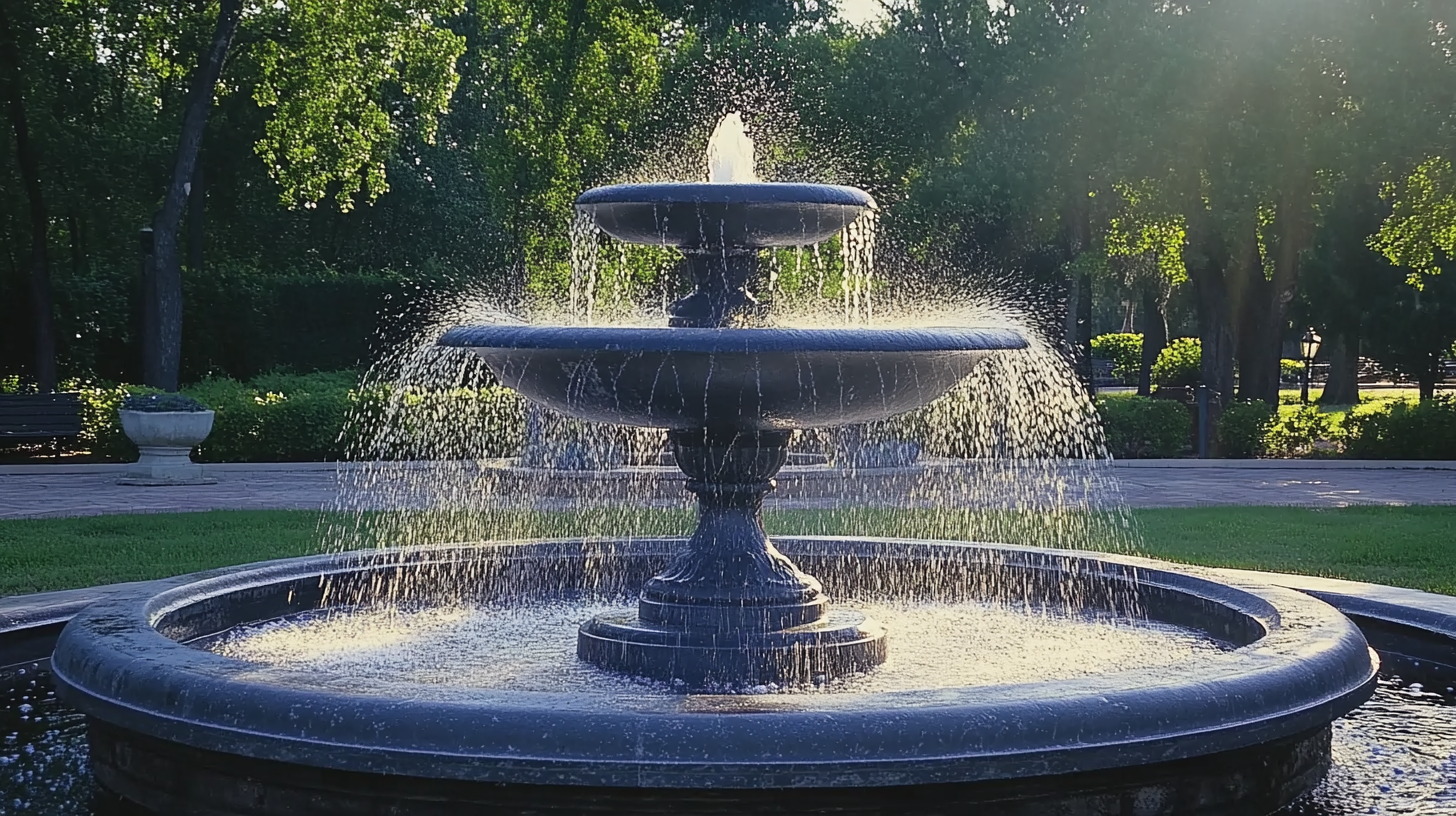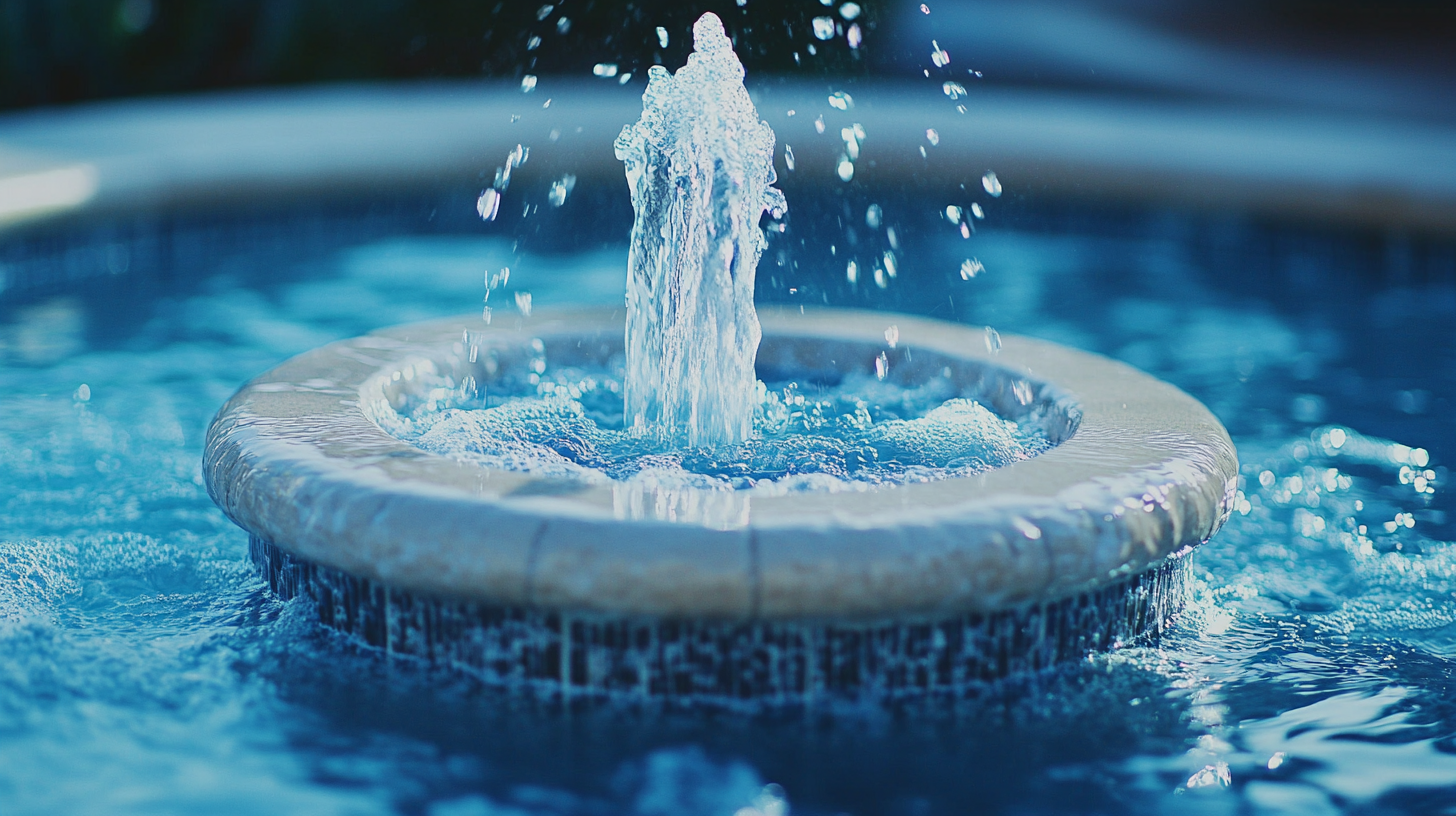Water fountains floating on the surface have become a wonderful ornamentation for lakes, ponds, and gardens in tandem with outdoor aesthetics that are hitting their zenith. Citing the American Society of Landscape Architects, such features not only offer an ambiance for relaxation, but also increase property values by as much as 15% and encourage wildlife. The charm of a floating water show compels many property owners, both residential and commercial, to get one on account of the apparent investment returns. Yet, the operating factor becomes efficient maintenance and economical repairs that keep these art pieces alive and functioning.
Safety, efficiency, and maintenance of Floating Water Fountains must go hand-in-hand for any useful maintenance program. When equipment is not properly maintained, energy consumption may go as high as 30% in additional power consumption and even higher in terms of repair costs, as stated in investigations by the Fountain Manufacturers Association. A systematic process for upkeep and repair is how owners can hope to recoup their expenditure. This blog outlines seven key considerations for Floating Water Fountain maintenance and cost-effective repairs that keep the fountain a spectacular centerpiece for years to come.

For floating water fountains, good knowledge about the major parts is needed to enable them function well and last longer. These incorporate pumps, turning lights floating, and many others, which have to be routinely checked: each essential part is: a pump is checked for clogs or wear; fittings of light are checked for being functional to provide the desired aesthetic effect. Water technology advances in the recent past reflect the current need for monitoring systems in improving the efficiency and effectiveness of aquatic environments. New system monitoring, like overhauled water reservoirs, has data collected and thus optimized waters flow and quality. Application of the same principles would be also possible for floating water fountains: while combining smart technology for real-time monitoring of water quality and component functioning, problems could be realized before costly repairs and allowed to develop further while operational efficiency continues to improve. Regular maintenance, which may include the routine inspection and prompt repair at times appropriate, is beneficial to the smooth operation of floating fountains. In fact, as proactive management might give good returns in terms of esthetic value with respect to a water feature, so also, is the case with sustainable production of freshwater ecosystem, offering that technology empowers greater efficiency in the maintenance of lifestyle aspects.

With the aid of the weather maintenance procedure, it is possible to extend the life span of floating fountains. While improving the aesthetic appeal, the maintenance can greatly help in protecting the water body. According to the Fountain Service Association study, an average lifespan of a fountain can be ended up to thirty percent greater than people investing their works consistently and on schedule. Thus upon the sustaining of routine checks and cleaning, one can substantially reduce the number of high-frequency repairs needed during the water body's lifetime.
Key important maintenance jobs involve verifying water quality and level of debris, which in the end directly affect the function of the fountain. Clean water in itself is the biggest factor that can lead to a clean water body and can preclude pump and water jet entrainment that has been so painful that it often warrants repair if not full replacement. Some sources suggest that full maintenance exercises should be conducted at least twice in a month, especially during the peak seasons of increased operation and usage of the water feature. Beyond that, there are seasonal works to allow the detection of the initial stages of wear and tear, with minor repairs subsequently made before they can snowball into moderate expenses.
Moreover, the existence and consideration of operational efficiency will also guarantee that fountain maintenance costs are reduced. Upgrading pumps and motors for energy efficiency may lower electricity bills. The Water Feature Efficiency Initiative ay also has it that reducing energy consumption by approximately 40% is likely where old motors could be replaced with current versions. By putting a higher emphasis on environmental practices and assisting all maintenance tools, the water feature tenants get the best out of the fountains by keeping them good-looking, effective, and economical in their operation.

Floating pool fountains are excellent for improving the aesthetic and serene beauty of outdoor space, but common issues can arise, which, if unattended, can warrant costly repairs. The commonest of all of this is water clarity, mostly caused by debris accumulation or algae growth. Therefore, the fountain should be regularly checked for water quality as well as leaves and other possible obstructions to its attractive appearance and functionality. It is a simple maintenance tip to remove surface debris using a pond skimmer or net.
Another common concern is mechanical failure due to pump problems or electrical faults. Pumps and power supply systems must undergo regular checks against any abnormal noisy behavior and vibrations. If these signs appear, the fountain must be switched off immediately, and a check must be conducted for clogs or damaged wiring. Regular cleaning of the pump will prevent inefficiencies and extend its lifespan, thus saving on possible replacement costs.
Watch for water level fluctuations as well. Water levels can diminish through evaporation, plant growth, or leaks, which can disrupt the fountain's operation. So make it a habit to check and refill the water levels. That will help in the effective functioning of the fountain. If you catch any sign of a possible leak in the fountain, do an acute, thorough check for signs of cracks or loose fittings. This way, you will be able to notice leaks and fix them before they develop into big problems that warrant costly repairs.

Cost-effective repair methods are very important for maintaining a floating water fountain in its beauty and functionality without compromising on quality. Choosing the right materials for repair is crucial. Often, high-grade tools and components save money in the future. Durability of pumps and fountain nozzles means they don't have to be replaced often, allowing the fountain to run for years. Furthermore, scheduled care may detect slight faults before they become large repairs, reducing the overall cost considerably.
Another crucial feature of cheaper repairs is that one should know the fountain's needs. Each fountain system has different requirements, and knowing your model can lead you to the right repair methods. For instance, using environment friendly cleansers will not only help in saving the planet, but it will also have beneficial effects on most internal parts of your fountain as well. Familiarity with suppliers in your locality goes a long way in enabling you to get discounted parts and maintenance services to bring down your repair costs.
Finally, you might want to consider repairing some very minor problems yourself; with the right tools and a little bit of knowledge, you may be able to simply fix some things on your own. Most of the time, you can find websites online that offer tutorials or guides on simple troubleshooting techniques and repairs, which mean less cash spent on labor when you are empowered to properly care for your fountain. Cost-effective ways of doing things can help you to maintain the beauty of your water features while keeping your budget in mind.
Seasonal maintenance of floating water fountains not only enhances their beauty, but also works toward prolonging their lifespan. According to the National Marine Manufacturers Association, regular maintenance can extend equipment life by as much as 30%. Proper seasonal maintenance can help eliminate common problems that arise due to temperature changes, debris accumulation, and algae growth, all contributing to keeping your investment as a decorative concentration point.
In springtime, a complete inspection has to be done after winter. Any debris that had settled in the fountain should be dislodged, and any functioning mechanical component should be checked for signs of damage or wear due to freezing temperature. According to reports by the American Society of Landscape Architects, carrying out pre-service maintenance can save up to 20% in repair costs for property owners over the year. Cleaning and testing the pump and filtration of the fountain ensures that they perform at their best when temperatures begin to rise.
In summer, extra vigilance must be exercised, as the water levels quickly drop through evaporation. Maintaining proper water levels will keep the pump from burning out and save equilibrium in the ecosystem. One other way to minimize excessive sun exposure and consequently decrease algae growth could be installing a fountain cover or shade cloth. Studies show that fountains that have a regular maintenance schedule tend to encounter fewer algae problems. By applying fewer chemicals, by around 15%, this contributes to cost savings for the owner and a healthier aquatic environment.
Autumn invites another chance for a thorough cleanup and winter preparation. Draining the fountain system and storing its components properly can prevent damage that freezing temperatures would cause. With proper winterization, your fountain will be spared from costly repairs in the spring and time-consuming clean-ups that may prove to be labor-intensive and expensive as well. Following these seasonal care tips ensures your floating water fountain is an investment in beauty that will continue to serve you cost-effectively for many years to come.
Routine maintenance is crucial for optimal fountain performance, enhancing aesthetics, extending lifespan, and protecting your investment. Consistent upkeep can increase fountain longevity by up to 30%.
It is recommended to conduct full maintenance at least twice a month, especially during peak usage seasons, along with seasonal inspections to catch wear and tear early.
Key tasks include inspecting water quality, checking debris levels, ensuring clean and well-circulated water, and preventing clogging in pumps and jets.
Upgrading to energy-efficient pumps and motors can lead to significant savings on electricity bills, potentially reducing energy consumption by as much as 40%.
Choosing high-grade tools and components for repairs is essential, as investing in durable pumps and nozzles can prevent frequent replacements and save costs in the long run.
Familiarizing yourself with your fountain model and its unique requirements can guide you in implementing appropriate repair strategies.
Yes, using eco-friendly cleaning solutions can protect the environment and enhance the lifespan of the fountain’s internal parts.
Consider DIY repairs for minor issues, using online tutorials for guidance, and becoming acquainted with local suppliers for discounted parts and maintenance services.
Regular maintenance checks can help identify minor issues before they escalate, significantly reducing overall repair costs.
Yes, with the right resources and knowledge, you can handle simple maintenance tasks yourself, saving on labor costs and taking better care of your fountain.